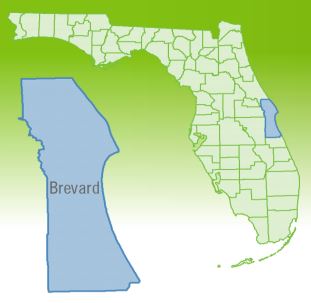Florida Home Prices Update
Home Price Update: Pace of Decline Moderates
The national composite fell by 2.0 percent in the first quarter of 2012 and was down 1.9 percent versus the first quarter of 2011. The 10- and 20-City Composites posted respective annual returns of -2.8 percent and -2.6 percent in March 2012. Month-over-month their changes were minimal; average home prices in the 10-City Composite fell by 0.1 percent compared to February and the 20-City remained basically unchanged in March over February. However with these latest data all three composites still posted their lowest levels since the housing crisis began in mid-2006.
In addition to the three composites five cities-Atlanta Chicago Las Vegas New York and Portland-also saw average home prices hit new lows. This is an improvement over the nine cities reported last month.
The S&P/Case-Shiller U.S. National Home Price Index which covers all nine U.S. census divisions posted a 1.9 percent decline in the first quarter of 2012 over the first quarter of 2011. In March 2012 the 10- and 20-City Composites recorded annual rates of decline of 2.8 percent and 2.6 percent respectively.
"While there has been improvement in some regions housing prices have not turned" says David M. Blitzer Chairman of the Index Committee at S&P Indices. "This month's report saw all three composites and five cities hit new lows. However with last month's report nine cities hit new lows. Further about half as many cities seven experienced falling prices this month compared to 16 last time.
"The National Composite fell by 2.0 percent in the first quarter alone and is down 35.1 percent from its 2nd quarter 2006 peak in addition to recording a new record low. The 10- and 20-City Composite mimic these results; also down about 35 percent from their relative peaks and hit new lows.
"There are some better numbers: Only three cities-Atlanta Chicago and Detroit-saw annual rates of change worsen in March. The other 17 cities and both composites saw improvement in this statistic even though most are still showing a negative trend. Moreover there are now seven cities-Charlotte Dallas Denver Detroit Miami Minneapolis and Phoenix-where the annual rates of change are positive. This is what we need for a sustained recovery; monthly increases coupled with improving annual rates of change. Once we see this on a broader level we will be able to say the market has turned around.
"The regions showed mixed results for March. Twelve of the cities saw average home prices rise in March over February seven saw prices fall and one – Las Vegas – was flat. The Composites were largely unchanged with the 10-City down only 0.1 percent and the 20-City unchanged. After close to six consecutive months of price declines across most cities this is relatively good news. We just need to see it happen in more of the cities and for many months in a row. Since we are entering a seasonal buying period it becomes very important to look at both monthly and annual rates of change in home prices in order to understand the broader trend going forward."
As of the first quarter of 2012 average home prices across the United States are back at their mid-2002 levels. With this report the National Index level hit a new low down 2.0 percent over the first quarter of 2012 and 1.9 percent below the first quarter of 2011.
As of March 2012 average home prices across the United States are back to the levels where they were in late 2002 for the 20-City Composite and early 2003 levels for the 10-City Composite. Measured from their June/July 2006 peaks the decline for both Composites is approximately 35 percent through March 2012. For both Composites March's levels are new lows in the current housing cycle.
In March 2012 12 MSAs posted monthly gains seven declined and one remained unchanged. Phoenix posted the largest annual rate of change +6.1 percent while home prices in Atlanta fell the most over the year down 17.7 percent.
Atlanta Cleveland Detroit and Las Vegas were the four cities where average home prices were below their January 2000 levels. With an index level of 102.77 Chicago is not far behind.
For more information visit www.homeprice.standardandpoors.com.






